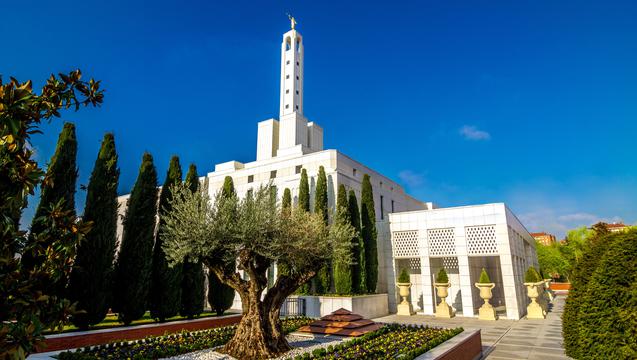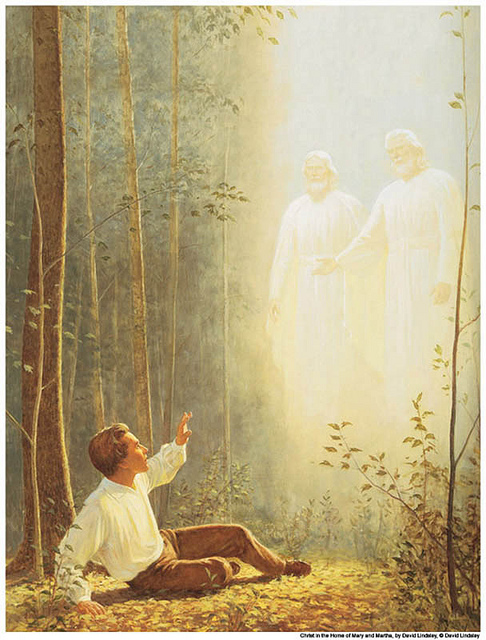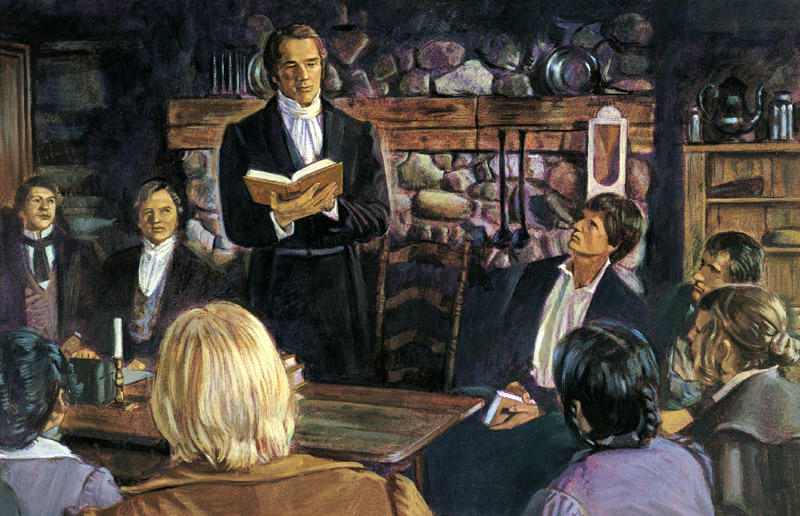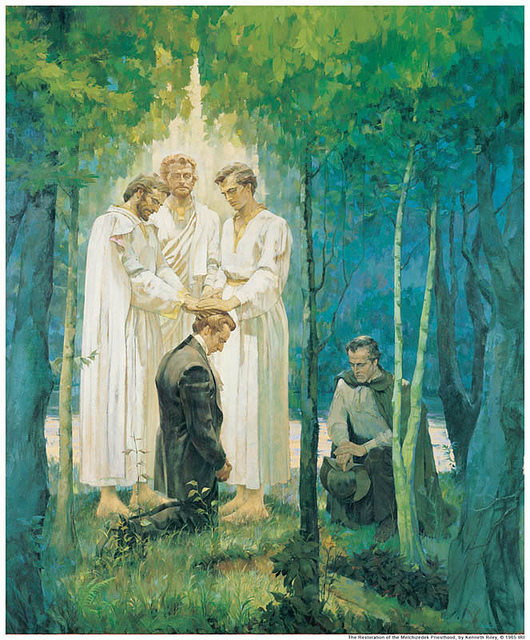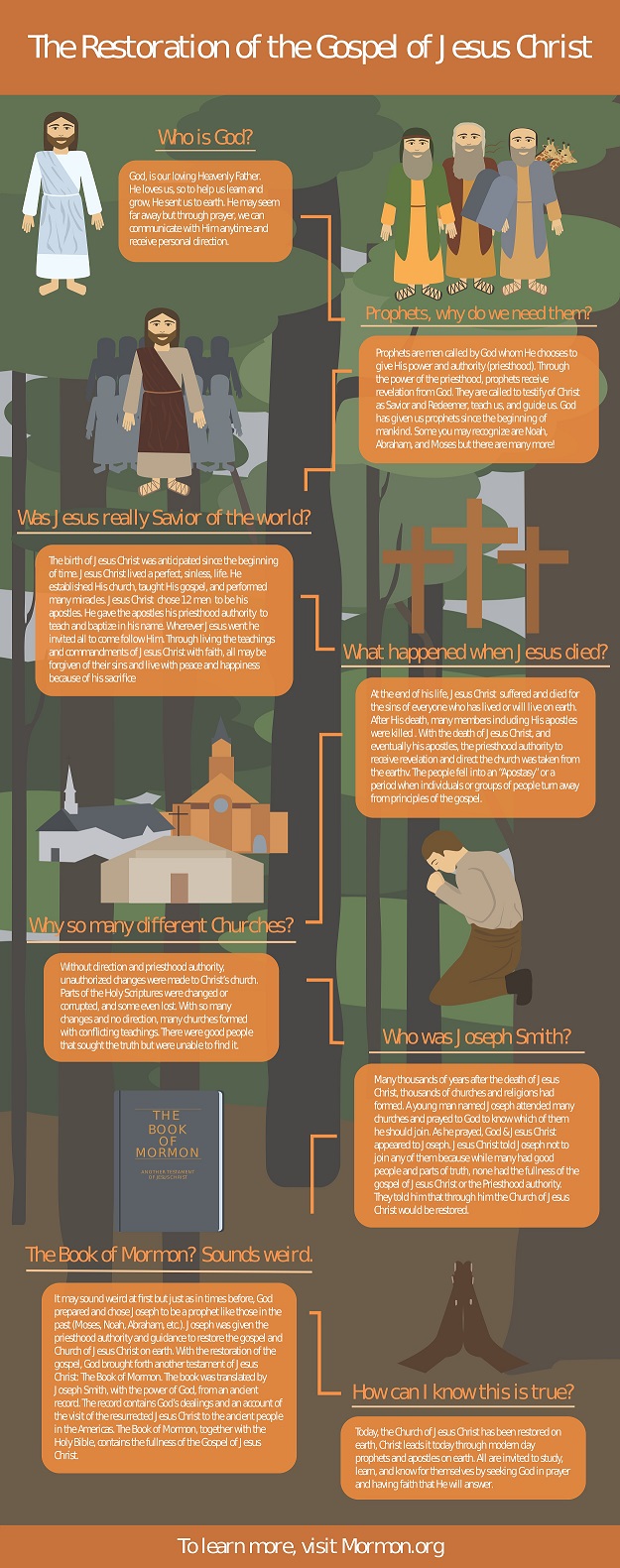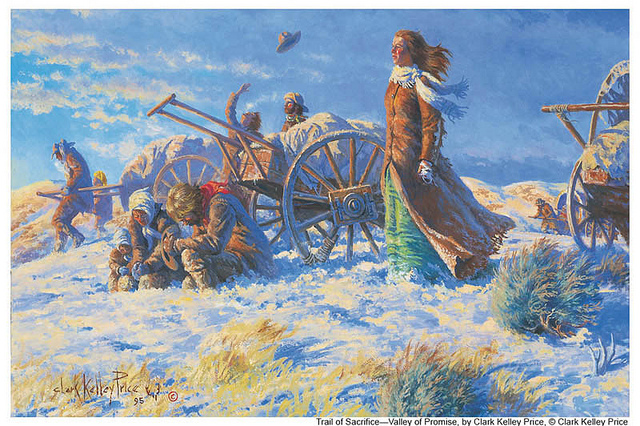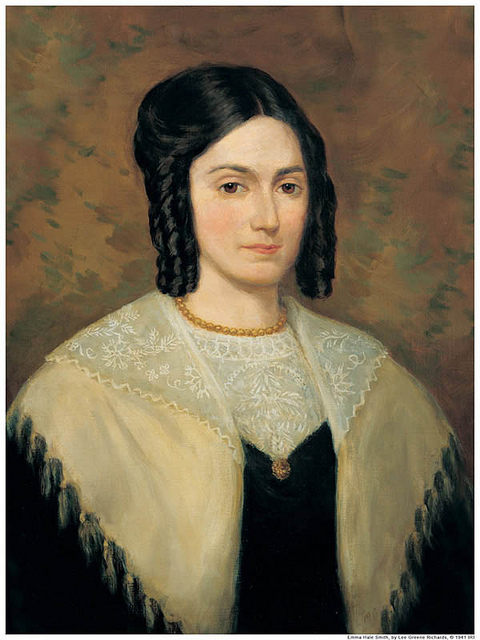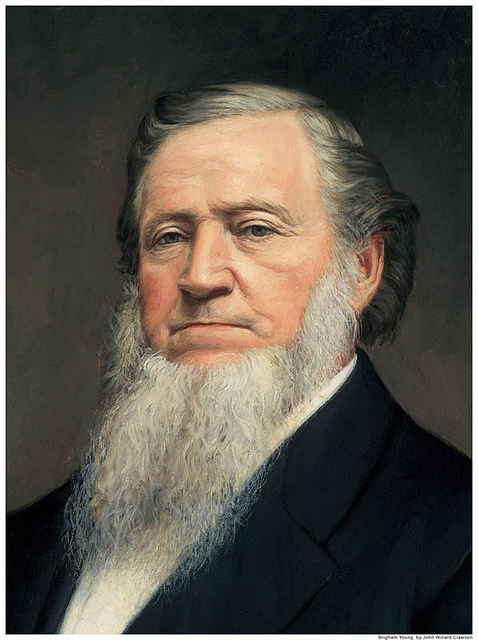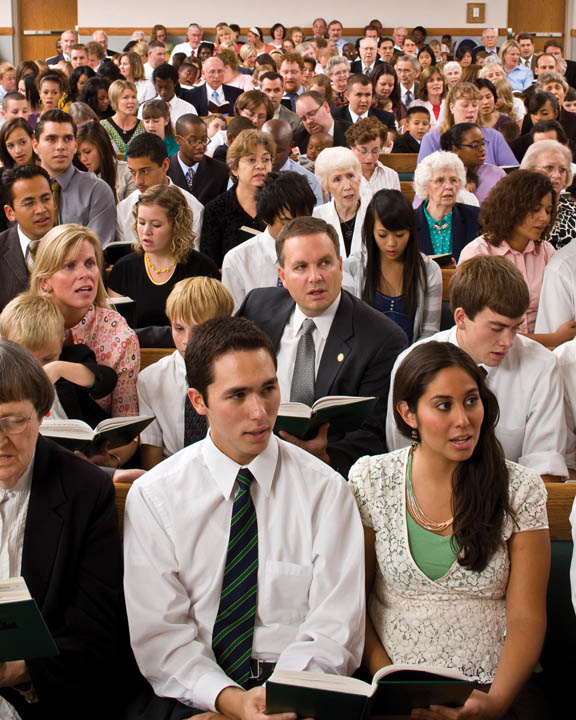Mormonism, The Church of Jesus Christ of Latter-day Saints, is the restoration of Christ’s ancient church, with authority and power to establish Christ’s kingdom on earth, to teach correct doctrine, enjoy the gifts of the Holy Spirit, and provide ordinances necessary for exaltation.
The restoration of Christ’s ancient church could not have taken place without the following events happening first:
- The Protestant Reformation — Protestants in Europe set about trying to reform what they saw as corruption and mistaken beliefs in orthodoxy. Eventually, they began to form new branches of Christianity.
- The printing of the Holy Bible — The invention of the printing press put the Bible into the hands of the common people, enabling them to read scripture and comprehend it through the promptings of the Holy Spirit instead of relying on church authorities to give them doctrine.
- The translation of the Bible into vernacular tongues enabled the common people to read it.
- Freedom of religion was established in the United States of America.
- The realization by many that “protesting” orthodoxy was not enough, but that a return to Christ’s original church was necessary.
The idea that Christ’s church needed a full restoration became popular in Europe, especially England, and the United States in the early 1800’s. At the time, the US was going through what was called the Second Great Awakening, which centered in the northeast. This spiritual fervor was typified by revival meetings and passionate preaching. The various Christian sects competed with each other for converts. Areas in New York were called the “burned-over district” because of the religious passion there.
Joseph Smith
Joseph Smith, Jr. was born into a family of devout Christians. Joseph Smith, Sr. and his wife Lucy Mack were engaged in their faith and in their patriotism, keeping track of politics and social issues. Joseph Sr. engaged in business and farming, but several failures in succession, including a series of crop failures in Vermont (due to a volcanic eruption in Indonesia that affected broad swaths of the northern hemisphere) landed the family in Palmyra, New York. The family’s poverty meant that they worked hard on their land and hired themselves out to others.
Joseph was a strong boy and a thoughtful one. In addition to his hard work clearing trees and other laborious tasks, he was hired to help dig on other people’s property for treasure. Rumors of treasure abounded at the time. These forays were unsuccessful, but Joseph was paid for his labors. Another reason neighbors may have sought Joseph’s help was that he was known to have a talent for “seeing.” Four or five people in the village area were known to have this gift, and they often used stones to aid their ability to “see” lost items. People engaged their services for this very purpose. Joseph was later to learn what real “seeing” was.
Revivals were entertaining and inspiring, and the Smith family attended whenever they had a break in their work on the farm. Soon, members of the family began to join either the Methodists or Presbyterians, but at age 14, Joseph couldn’t decide. It seemed strange to him that every sect claimed to be true, but that they all disagreed; they seemed not to refrain from bitter arguing, and that seemed un-Christ-like to Joseph. He didn’t feel like he could find answers in the Bible, because all the sects were upholding their various beliefs from that same book.
But one night he was reading the promise in James 1:5, which says, “If any of you lack wisdom, let him ask of God, that giveth to all men liberally, and upbraideth not; and it shall be given him.” Joseph thought he might ask God which church he should join, and early in the spring of 1820, he resorted to a grove of trees on the family property to do so.
After I had retired to the place where I had previously designed to go, having looked around me, and finding myself alone, I kneeled down and began to offer up the desires of my heart to God. I had scarcely done so, when immediately I was seized upon by some power which entirely overcame me, and had such an astonishing influence over me as to bind my tongue so that I could not speak. Thick darkness gathered around me, and it seemed to me for a time as if I were doomed to sudden destruction.
But, exerting all my powers to call upon God to deliver me out of the power of this enemy which had seized upon me, and at the very moment when I was ready to sink into despair and abandon myself to destruction—not to an imaginary ruin, but to the power of some actual being from the unseen world, who had such marvelous power as I had never before felt in any being—just at this moment of great alarm, I saw a pillar of light exactly over my head, above the brightness of the sun, which descended gradually until it fell upon me.
It no sooner appeared than I found myself delivered from the enemy which held me bound. When the light rested upon me I saw two Personages, whose brightness and glory defy all description, standing above me in the air. One of them spake unto me, calling me by name and said, pointing to the other—This is My Beloved Son. Hear Him!
The fact that God the Father and Jesus Christ appeared as two separate beings dashed the general belief in a “trinity,” where God, Christ, and the Holy Ghost are of one substance. Many Christians think that when Christ educated Joseph during this visitation, He condemned every Christian sect, calling them abominations, but that was not the case. Churches everywhere were peopled by sincere disciples of Christ. Here is what Jesus said to Joseph: “… the Personage who addressed me said that all their creeds were an abomination in his sight…” The creeds were an abomination, because they misrepresented the nature of God and the Savior. In this visit, Christ also condemned corrupt religious leaders and mixing the doctrines of God with the philosophies of men, something that occurred in the few hundred years after Christ. Christ said He would restore the fullness of His gospel and that Joseph had a part to play in that.
The Restoration had Heaven Behind it
In the ensuing years Joseph was taught by heavenly messengers. Restoring the gospel could not be done by men searching history for lost truth. The restored gospel is the only church that began with a “new” book, as Joseph was led to find an ancient collection of scripture engraved on metal plates, the record of Semitic families who left the Holy Land for America anciently, and whom Christ visited after His resurrected, calling them His “other sheep.” The Book of Mormon is a second witness that Christ was born in Bethlehem of the Virgin Mary, preached the Good News to the Jews, was crucified, and was resurrected the third day; that He is the Savior of the World.
Lesser (Aaronic) priesthood power was restored to the earth through John the Baptist; higher (Melchizedek) priesthood power was restored through Peter, James, and John; the sealing power, the keys to the regathering of Israel, and the fullness of the dispensation of Abraham were restored through Moses, Elias, and Elijah. Christ appeared to Joseph on many occasions, and most of Joseph’s visions were received in the presence of other people, some of whom also partook.
The Church of Jesus Christ was formally organized with just six people on April 6, 1830, while tens observed, waiting to be baptized. Many new converts were of the “restorationist” bent, who had either had personal spiritual witnesses that the ancient church needed to be restored, or who had actually joined a restorationist movement, like the Campbellites.
Gathering and Fleeing
Opposition to the Mormons (nicknamed because of the Book of Mormon) began even before the Church was organized, and members always faced mob violence. They fled New York to Kirtland, Ohio, but were driven out. Next, they were driven out of Missouri and even faced with extermination. They settled in Nauvoo, Illinois, and in their few years of relative safety built an exquisite city rivaling Chicago. Their anti-slavery stance and inward facing lifestyle drew suspicion. In 1844 Joseph and his brother Hyrum were martyred. Their brother Samuel died a month later of injuries sustained when riding back and forth to and from Carthage Jail. Joseph’s father had died earlier in Nauvoo, exhausted by the trials of moving from Missouri.
The mobs had hoped that with their prophet’s death, the Mormons would fall into disarray, and the Church would fall apart. Joseph had prophesied his own death and had committed the keys of the kingdom to the Twelve Apostles, but this was the first time prophetic succession had occurred. It was a surprise, and most of the apostles were abroad doing missionary work. Sidney Rigdon stepped forward to attempt to become the “Guardian of the Church,” but most Saints received a spiritual witness that Brigham Young was to be the next prophet. Brigham was a strong leader, just the man to move the Saints west, as both he and Joseph had seen in vision, to a place of safety in the Rocky Mountains.
A few splinter groups broke off from Mormonism at this time — people enticed by other strong personalities. Most of these groups have dissolved or have very few members. The largest was called The Reorganized Church of Jesus Christ of Latter-day Saints, established in part by one of Joseph’s disaffected sons. Now called the Community of Christ, the church resembles conservative Protestantism now.
For more, go to HistoryofMormonism.com.
Polygamy among Latter-day Saints
In the early 1830’s Joseph had inquired of the Lord as to why Abraham, Isaac and Jacob were not condemned for the practice of polygamy, but David and Solomon were. The Lord explained through revelation the principle of eternal marriage, wherein marriages performed on earth in holy temples using the same sealing power Elijah had bestowed were also sealed in heaven and could last eternally. God also revealed that the ancient prophets and David and Solomon did not sin when entering into plural marriages commanded and sealed by God; only when they entered into forbidden unions, like Solomon did when he married outside the faith for political reasons. God had already said in the Book of Mormon that plural marriage was only right when commanded by Him; otherwise, men should only take one wife. It took a great deal of unselfishness and Christ-like charity and purity to be successful at plural marriage.
Early concepts of polygamy had the idea that faithful families could be united in the eternities, and that children could also be sealed to valiant men. Early polygamous unions were very few and guarded. The Saints were so persecuted that entering into polygamy could seal their doom in American society. Joseph entered into “marriages” (they were never called that) that connected his family with other valiant Latter-day Saint families, and was sealed to women who were already married. That sounds astonishing, but these marriages were for eternity only, not for mortality. The women in these marriages stayed with their husbands during mortality. Some people outside the Church thought polygamy was meant to satisfy sexual urges, but evidence points strongly in the opposite direction:
- It took Joseph many years from the time of his revelation on polygamy to try to institute it. He said it took three angelic visits to convince him, the third one very threatening. He evidently was left to himself to figure out how to implement the practice, which practice repulsed everyone who considered it. Joseph should be forgiven for his fits and starts, and his clumsiness with the principle at times.
- All the men and women of the Church hated the idea. They were Victorian Europeans after all. Each person who was invited to participate was able to call upon God to receive a witness that it was from Him. Many of these spiritual experiences have been recorded. God was willing to open the heavens to these Saints to help them understand.
- Joseph should have had many children from these unions, which numbered between 35 and 40, but only one offspring is plausible.
- Women had a great deal of say in these unions. They could refuse and had the right to divorce on demand.
Polygamy as an institution was never meant to last always in mortality. It was part of the “restoration of all things” and survived until it was no longer useful — when Utah had the opportunity for statehood, and members of the Church were asked to thrive wherever in the world they were, instead of gathering to Utah. Sanctions against the Church by the US Government were so severe, the government’s attempt to destroy it almost succeeded. Prophet Wilford Woodruff’s Manifesto of 1890, the result of a vision, ended polygamy. In 1904 Prophet Joseph F. Smith added the punishment of excommunication to those trying to continue the practice. Again, a few groups splintered off — people who wanted to continue in their polygamous unions. Today these groups are small and insular. Most have never been members of the main church. Mormons who try to live polygamous lifestyles are excommunicated from The Church of Jesus Christ of Latter-day Saints.
To read more, go to JosephSmithsPolygamy.org.
Emma and Brigham
Emma Smith, Joseph’s wife, had a lot of trouble with polygamy, which is understandable. She said she knew the principle was of God, but that she was “jealous-hearted.” She wavered back and forth, sometimes railing against it and at other times facilitating Joseph’s sealings to other women. In public, Joseph was only accompanied by Emma. Emma Smith faced more adversity than one can comprehend because of attacks against Joseph. In spite of her shortcomings, she comes out a hero by any measure. She really felt that polygamy would destroy the Church, and it was easy for Joseph to see that possibility, too.
Brigham Young felt that if the Saints could be secluded in the West for a decade, they would flourish and never fall. Some years after they arrived there, their numbers increasing daily, they publicly announced the practice.
Emma could not go west, but remained in Nauvoo and remarried. She had many reasons. One was her health. She also wanted to keep her home and to guard Joseph’s grave. She had disagreements with Brigham Young over debts still owed by Joseph, and things were complicated by a go-between who helped neither of them.
Because of polygamy, descendants of the most faithful families became the backbone of the Church. Emma’s descendants, however, mostly followed the Reorganized Church. Over 100 of Joseph and Emma’s descendants have converted to the main body of the Latter-day Saints, and that number is growing.
Blacks and the Priesthood
Latter-day Saints were Americans and European immigrants, mostly, from either a Protestant or Catholic tradition. In the 1800’s most Latter-day Saints were converts to the Church, and they brought traditional biases with them from their former faiths and cultures. Latter-day Saints as a group in all their areas of gathering in the US were anti-slavery, and Joseph Smith ran for president of the United States on an anti-slavery ticket.
It is difficult, with our current sensibilities, to imagine the racism that was rife in America and the world. Many Americans did not consider Blacks completely human; many considered them soul-less; most Christian traditions considered them the seed of Cain. And yet, in the early days of Mormonism, Black members received the priesthood.
When a man receives the Mormon priesthood, he is not becoming part of a professional clergy, but does receive the right to administer in callings and offices where priesthood is needed, give blessings of healing, and participate in temple ordinances. Bishops (congregational leaders) must hold the priesthood. A Black member holding the priesthood could lead an all-white congregation. This occurs often today, but white members must be prepared to accept that. Such a thing was nearly impossible during the 1800’s in America.
Latter-day Saints of the first half of the nineteenth century seemed able to accept Black leadership, but not intermarriage. Interracial marriage was unthinkable, and an instance of it in Winter Quarters, Nebraska, after the Saints had been driven out of Nauvoo, Illinois, seems to be what moved Brigham Young to bar Blacks from the priesthood. Historical records on this subject are not complete enough to determine whether there was a revelation, or not. But after years of petitioning God for Blacks to hold the priesthood, a profound revelation was received in 1978. Since then, the gospel has spread quickly through Africa and other areas where Blacks have been eager to join and to serve in the Church.
Prophetic Legacy
The Church of Jesus Christ of Latter-day Saints is unique and often misunderstood. Some of its doctrines seem odd compared to those of other Christian churches, but thorough research shows that these doctrines are the same held sacred by Christians under Christ and His apostles, before a “falling away” occurred. Here are some of them:
- God the Father, Jesus Christ, and the Holy Ghost are three separate beings. God the Father and Jesus Christ have glorified, resurrected bodies, while the Holy Ghost is a personage of spirit. They are one in motivation and knowledge, and their desire to save mankind.
- God has created worlds beyond number, and all of them through His Son, who is the Word. Christ’s light is in all things, through all things, and is the power that powers the universe.
- Mormons call this power “priesthood.” A portion of that power, the power and authority to act in God’s name on the earth has been shared with all worthy men in the Church, which is mostly run by lay members.
- The Church is organized after the structure of the ancient church, with a prophet, apostles, seventies, etc. Women do not administer in the priesthood, but share its power and serve in many leadership positions in the Church.
- The main principles of Mormon belief and practice are faith, repentance, baptism by immersion for the remission of sins, receiving the gift of the Holy Ghost by the laying on of hands, and enduring to the end in faith and righteousness. Mormons believe in calling on God’s grace for every need and trial. We are saved by grace, but judged according to our works and the set of our hearts. Judgment accounts for lack of knowledge and the difficulty of the journey during mortality.
- All the spiritual gifts are manifest in the Church, and miracles are common, especially through the administration of the priesthood.
- You and I are eternal beings. We existed for eons in the presence of God before being born into mortality. He is the Father of our spirits. After mortality and a time in the Spirit World, we will be resurrected and glorified to the extent that we are willing. God’s desire is that we become like Him — Godlike.
- We are here on this earth because we ‘chose’ Christ in the pre-mortal world. Others, 1/3 of the heavenly host, sided with Satan and were cast out. They will never have bodies or be resurrected, but will become Sons of Perdition.
- The only people who will join Satan in hell (“Outer Darkness”) are essentially fallen prophets. Having seen the Christ, they then deny Him, thus crucifying Him anew. Everyone else will be saved to a kingdom of glory in heaven they are willing to receive, even those who reject Christ on earth and in the Spirit World after death.
- Men cannot be judged in ignorance. Everyone will have the opportunity to hear and accept the gospel, whether it be here on earth or in the Spirit World after death. Thus, no one is condemned unless they choose to be.
- Temple ordinances (work for the dead) are provided for those in the Spirit World who desire them. Baptism, confirmation, the endowment, and sealing to spouse and family. Families can be eternal units, and those who receive the endowment ordinances and remain worthy are sealed to God and Christ.
- Mormons believe in honesty and chastity outside of marriage and fidelity within marriage. They have the “Word of Wisdom” a health law received by revelation, that forbids the use of alcoholic beverages, coffee, tea, tobacco and drug abuse.
- Mormons believe in charity and perform constant acts of service locally and globally.
- Mormons believe in an open scripture and continuing revelation, including personal revelation through the constant companionship of the Holy Ghost.
- Mormons are humble, friendly, and approachable. They hope to be recognized as Christians by friends of other faiths.

